iPad mini Review
by Anand Lal Shimpi & Vivek Gowri on November 20, 2012 6:10 PM ESTDesign & Smart Cover
The smaller screen of the mini is joined by the super-slim industrial design from the fifth generation iPod touch that debuted a couple of months ago. I’m actually a pretty big fan of the direction Apple’s mobile design teams have taken recently, the overall visual style is much cleaner and focused now, with less pronounced radiusing and more rectangular profiles across the board. The edges are rounded enough for a very smooth in-hand feel, but the front edge has the same highly polished, chamfered ring around the bezel as the iPhone 5.
The dark monochromatic look is very sleek; combined with a brightly colored Smart Cover like the red one, the effect is pretty striking. The white/silver colour scheme, as on the iPhone 5, is elegant, but nowhere near as visually striking as the uniformly dark mini.
The face should be very familiar to iDevice users - a front facing camera centered at the top, an ambient light sensor to the left of it, and a home button at the bottom. The home button has been shrunk, though it’s set far enough away from the screen that I feel like they could have easily kept the same home button that is used in the other iDevices. I’m assuming there’s a reason for the downsizing, probably relating to the placement of the hardware around the display, because this isn’t the type of thing typically overlooked by Jony Ive and Co.
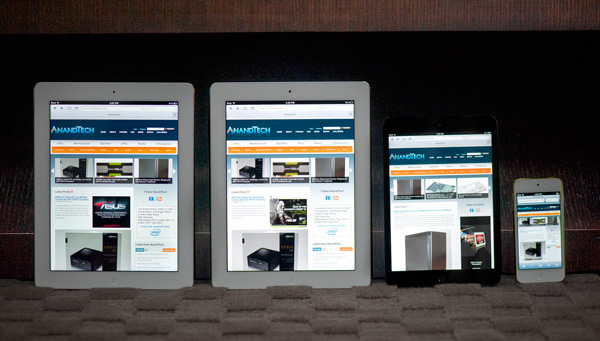
From left to right: iPad 4, iPad 2, iPad mini, iPod Touch (5th gen)
The bezel has been reduced considerably in size in all four directions, but more so on the sides than to the top and bottom. The result is a device with a slightly different physical aspect ratio than the 9.7” iPad - 4.45:3 instead of 3.90:3 (where, in both cases, the display has an aspect ratio of 4:3). The narrower bezel looks good - cleaner and more modern, and I think the iPad mini is better proportioned aesthetically. Of course, the smaller footprint is also one of the main factors in the awesome in-hand feel, so it’s a functional decision as much as an aesthetic one. Surprisingly enough, the lack of bezel on the sides of the mini doesn't impact normal use. Apple tweaked iOS a bit to improve touch rejection along the edges of the mini.
Button and port placement is identical to the preceding iPads, with a few minor but important changes. The silence/rotation lock slider in particular feels much more robust than in previous editions. The top edge has the power button on the right and headphone jack on the left, with volume buttons on the right edge, next to the camera. The buttons themselves are now metal, and offer better feel and feedback than the plastic buttons of the 9.7” iPad.
Coming around the edge to the bottom, we see that the 30-pin dock connector has been replaced by the new Lightning port, centered as always. The mono speaker in the right corner of the back is now gone, superceded by a pair of speakers set on either side of the Lightning port. That’s right - the iPad finally has stereo speakers, and they’re actually pretty decent. Clean sound output, and loud enough to fill a 400 sq ft room without distorting at high volumes. As with most mobile devices, the sound is a bit thin, but a decent improvement over my admittedly low expectations.
Given that the iPad mini shares the same colors and materials as the iPhone 5, I was curious to see whether the paint would be as fragile and whether we’d see a repeat of the quality control issues Apple had with it at launch. Thankfully, the anodization seems far more robust and significantly more resistant to scratching, even on the polished aluminum band at the front. I didn’t see any material or paint defects when I unboxed it, even after a thorough going over, and through two weeks of not particularly gentle use, I haven’t seen any scratching. It’s a very different experience than my iPhone 5, which came out of the box with the front panel not properly clipped into the aluminum frame and scratched whenever I looked at it wrong. This isn’t a device that needs any other kind of case unless you plan on abusing it, and I feel like a larger case would undo some of the benefit of the ultralight chassis.
Apple does built a custom Smart Cover for the mini, available in a number of colors. Unlike the bigger Smart Cover, the mini's cover integrates the magnetic hinge into the same material as the rest of the cover, resulting in a very cohesive design:
The big benefit of the Smart Cover is the ability to use it as a stand:
The angle of the folded Smart Cover is considerably larger than on the standard iPad, making the iPad mini lean back more vs. standing upright on the bigger model:
I would recommend getting a Smart Cover for the versatility of the stand and to have some form of protection for the screen. Plus, the black iPad mini + red Smart Cover combination just looks awesome.


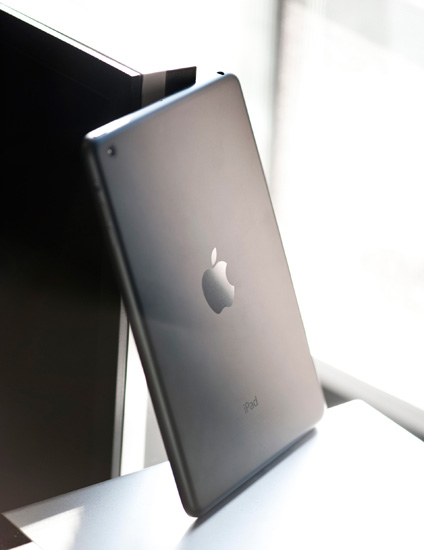
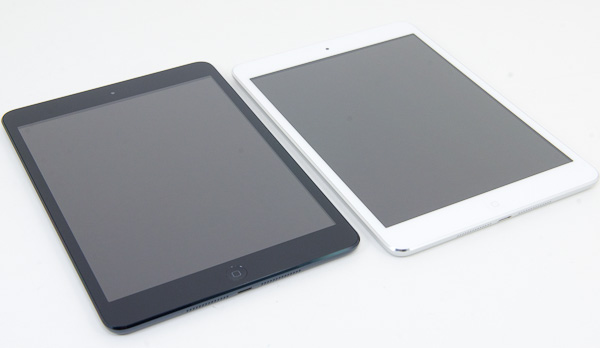
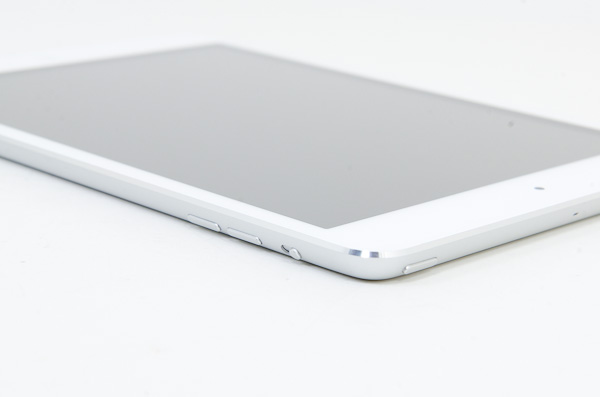
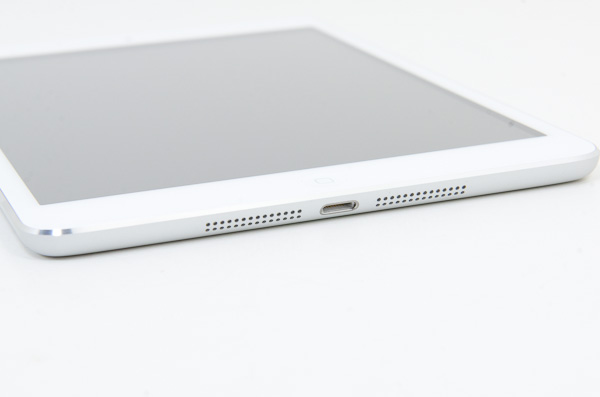
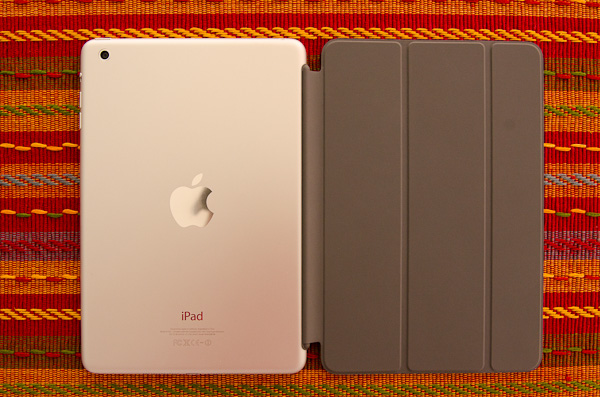
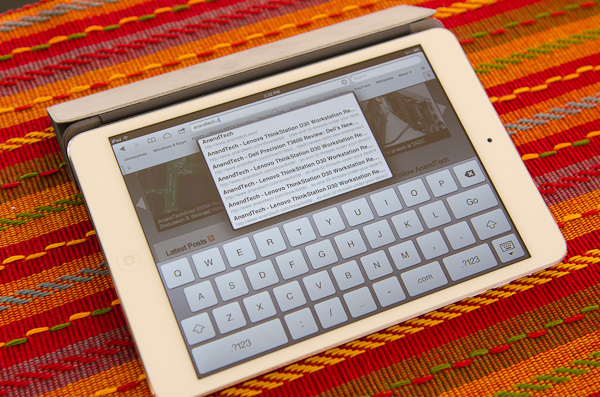
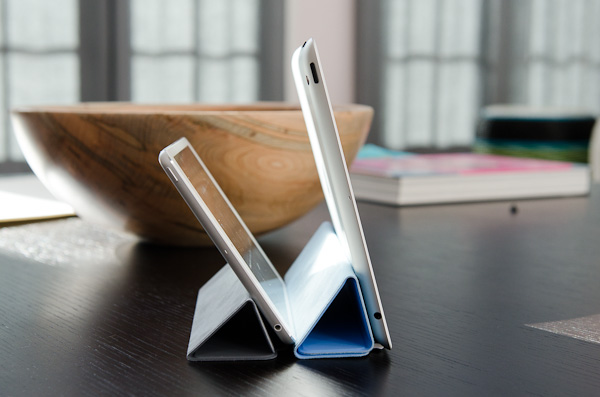








140 Comments
View All Comments
MadMan007 - Tuesday, November 20, 2012 - link
Here's another display-related thing to fix: the charts for Brightness (black and white) and contrast don't include the Nexus 7 for some bizarre reason..hmm...but the later charts on the same page 4 do.Anand Lal Shimpi - Tuesday, November 20, 2012 - link
Fixed, thank you :)Take care,
Anand
ksherman - Tuesday, November 20, 2012 - link
While I understand where you're coming from, the reason the Nexus is zoomed in is because the Nexus "fakes" it's resolution in the web browser to about 603 so that responsive web pages render elements larger so they're easier to use on the Nexus 7. So the side by side photo is simply comparing the default view on load.In fact, this is actually somewhat of a negative for the iPad Mini on responsive sites because it means it's rendering pages designed for a much larger display.
Source: http://www.lukew.com/ff/entry.asp?1663
MadMan007 - Wednesday, November 21, 2012 - link
Now this would be something interesting to investigate and inform readers about. I didn't know about different devices presenting different resolutions and am not sure what the differences really mean.Galatian - Tuesday, November 20, 2012 - link
As a medical student I fast pretty fast in preordering the cellular white iPad mini here in Germany. It is the perfect size to fit into a white coats pocket. I will read a lot of books on it, so it was a hard decision between this and the 4th Gen iPad. But size does matter and eventually Retina will come to the mini line. For right now I just have to live with the resolution.Granseth - Tuesday, November 20, 2012 - link
This is a big issue for me with the Ipad 2, and it will be the same with Ipad mini. When I try to use the Ipad2 as a productive device I often lose information I write because the webpages and apps has to reload when the device gets out of memory and have to free something to load the next app/webpage. And this has become much worse as the Ipad has aged, so it's terrible that they are selling a new device with only 512MB of RAM.But hopefully people will use this smaller device as a consumption device, and not a productivity device.
ratte - Tuesday, November 20, 2012 - link
Excellent review as always, balanced and informative.It's a pity that Apple can't easily go to an intermediate resolution like 1600 x 1200, like Android can, but is stuck with the rezdoubling. For me the mini would have felt more futureproof if they had used an A6 with 1Gb memory. but then this is Apple....
MadMan007 - Tuesday, November 20, 2012 - link
Yeah, they need something obvious but AWESOME to make sure everyone buys a new one next year.Gaugamela - Tuesday, November 20, 2012 - link
Now it's easy to understand why Apple wanted to ban the Galaxy Tab 7.7. The iPad Mini is a rip-off of it. With a much worse display since the GT7.7 had a Super Amoled + display of superior resolution.Samsung was a year ahead of Apple and it still holds up great, if Samsung updated it to Jelly Bean.
I would like to see a new Galaxy Tab 7.7.
And the display is a disapointment. It makes it a no buy device instantly, it's 130$ more expensive than the Nexus 7 and offers a worse display. Anyone that picks the Mini should only do it by the form factor or preference by iOS.
ltcommanderdata - Tuesday, November 20, 2012 - link
The form factor is why I'm considering the iPad Mini over the Nexus 7. It has great build quality, is thinner, lighter, yet has battery life that is similar or better and has a screen that's a third larger. The Nexus 7's advantage in screen resolution in itself is not as important for me because the screen is smaller so showing more tiny content isn't useful. The lower pixel density is a concern for clarity. The CPU may be weaker, but the GPU is stronger which given good GPU acceleration for UI responsiveness is a reasonable exchange. $130 more maybe worth it if the better form factor makes the device more useable so that it sees more use.